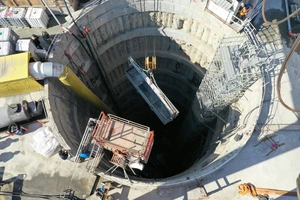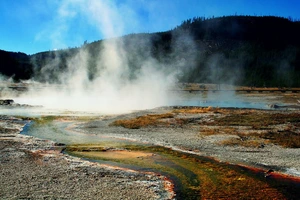“Nevertheless, while there are geothermal resources in Lithuania, very little is being utilised. Additionally, the country’s reservoirs are characterised by high water salinity and technical challenges related to reinjecting water into the rocks. This complicates their long-term and efficient use, especially when compared to more developed geothermal projects in other European countries,” observes the KTU scientist.
Could reduce dependence on imported electricity
Prof. Pal highlights that the effective use of geothermal energy could significantly reduce Lithuania’s dependence on imported electricity (currently about 70 per cent) and gas, especially in western Lithuania.
“A few hundred MW from Cambrian geothermal systems could offset electricity imports, and Devonian aquifers could replace the use of biomass or gas in district heating networks. It is important to emphasise that, compared to other sources, geothermal energy emits minimal CO₂, and its supply is available around the clock. In contrast, solar and wind energy generation depends on seasonality,” he notes.
According to the KTU scientist, Cambrian geothermal power plants could complement the base capacity of renewable energy sources and help balance the fluctuating outputs from solar and wind energy. Although their capacity would be modest (tens of MW), compared to the hundreds of MW generated by wind farms, they would still make a significant contribution to the overall energy supply.
“Geothermal energy could make up 5–10 per cent of the 45 per cent share of renewable energy sources, which is about 50–100 MW from Cambrian systems,” he says.
This type of energy stands out not only for its stability but also for its versatility – geothermal power plants can be used for both heat and electricity generation. The dual-purpose capability allows for more efficient use of accumulated energy resources, and continuous operation throughout the day increases the system’s reliability, especially for critical infrastructure needs.
A strategic energy source for defence
However, the development of geothermal projects faces challenges: significant initial investment is required, especially if there are no existing wells in the area, and the process from research to operation takes longer than with other renewable sources. Although these power plants are not as powerful as wind farms, their value lies in their stability and ability to provide an uninterrupted supply.
“These very qualities could make geothermal energy play an important role in areas where energy supply interruptions are unacceptable, such as in the defence industry. Its stability and reliability make it a long-term alternative, complementing variable renewable sources,” notes Prof. Mayur Pal of KTU’s Faculty of Mathematics and Natural Sciences.
The KTU scientist believes that Lithuania has great potential to become a leader in geothermal energy in the Baltic region, as Latvia and Estonia do not have such resources. The temperature of Cambrian systems and the flow properties of Devonian layers are unique to Lithuania’s territory.
“Projects such as reviving the Klaipėda geothermal power plant and integrating this energy into district heating could become a model for other countries. Moreover, Lithuania could collaborate with Nordic countries, such as Denmark, which is developing geothermal projects in the Baltic Sea region. This would allow Lithuania to share experiences and attract European Union funding,” he says.
Prof. Pal emphasises that to tap into this potential, investment and political support are necessary, as currently, priority is given to solar and wind energy. If Lithuania commits to actively developing geothermal energy, by 2030, it could become a leading country in the Baltic region in the use of low-enthalpy geothermal energy.




